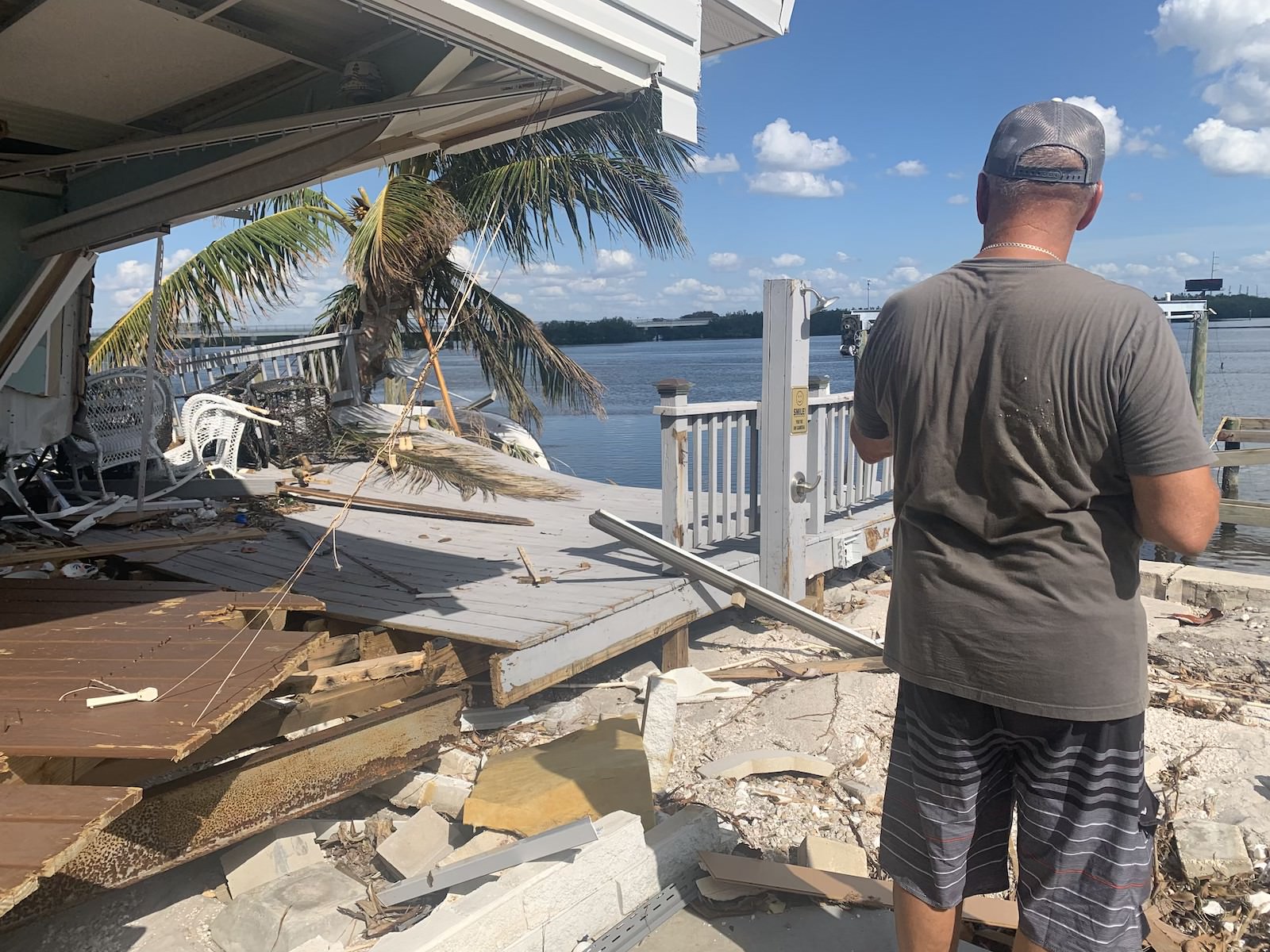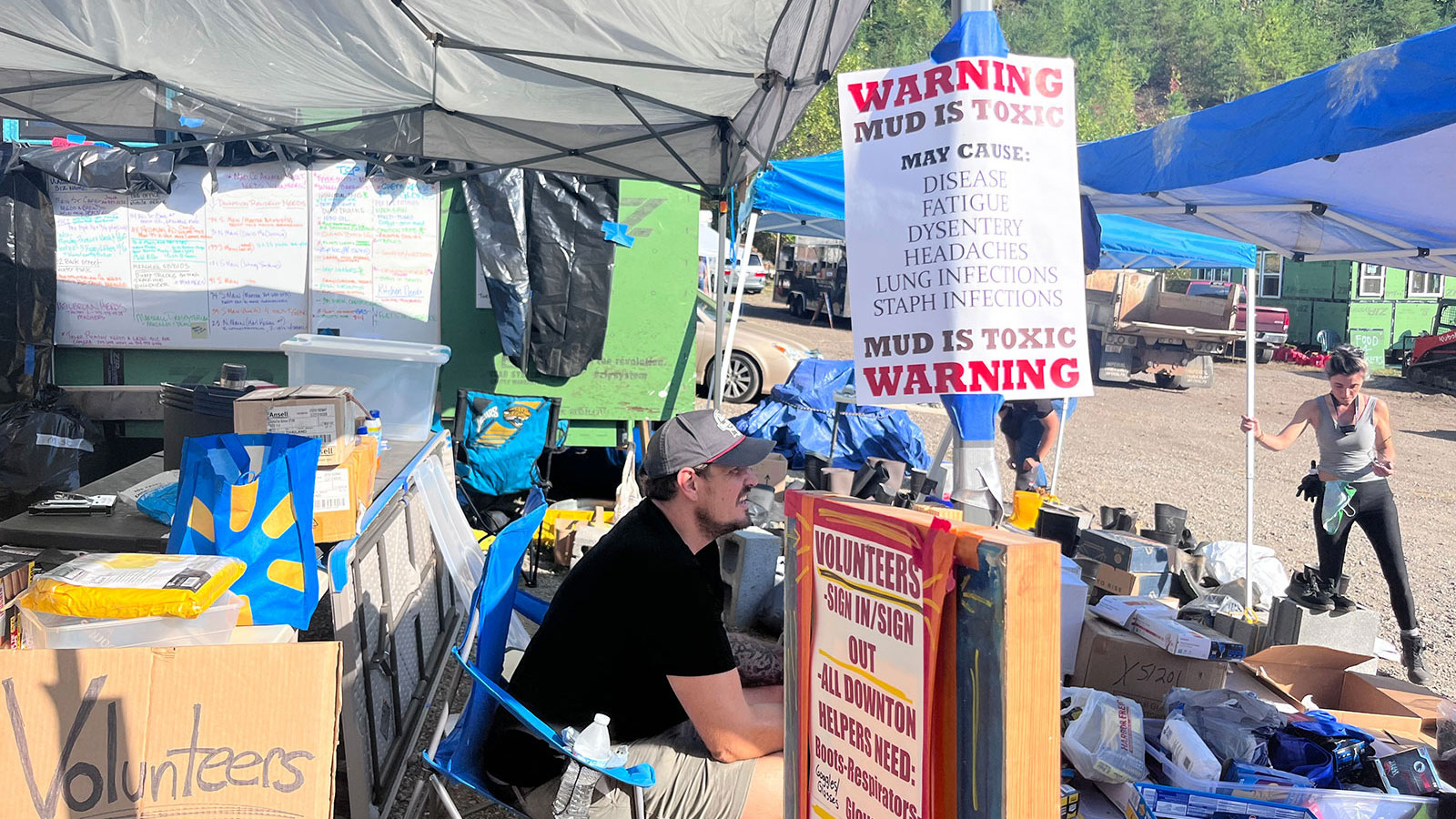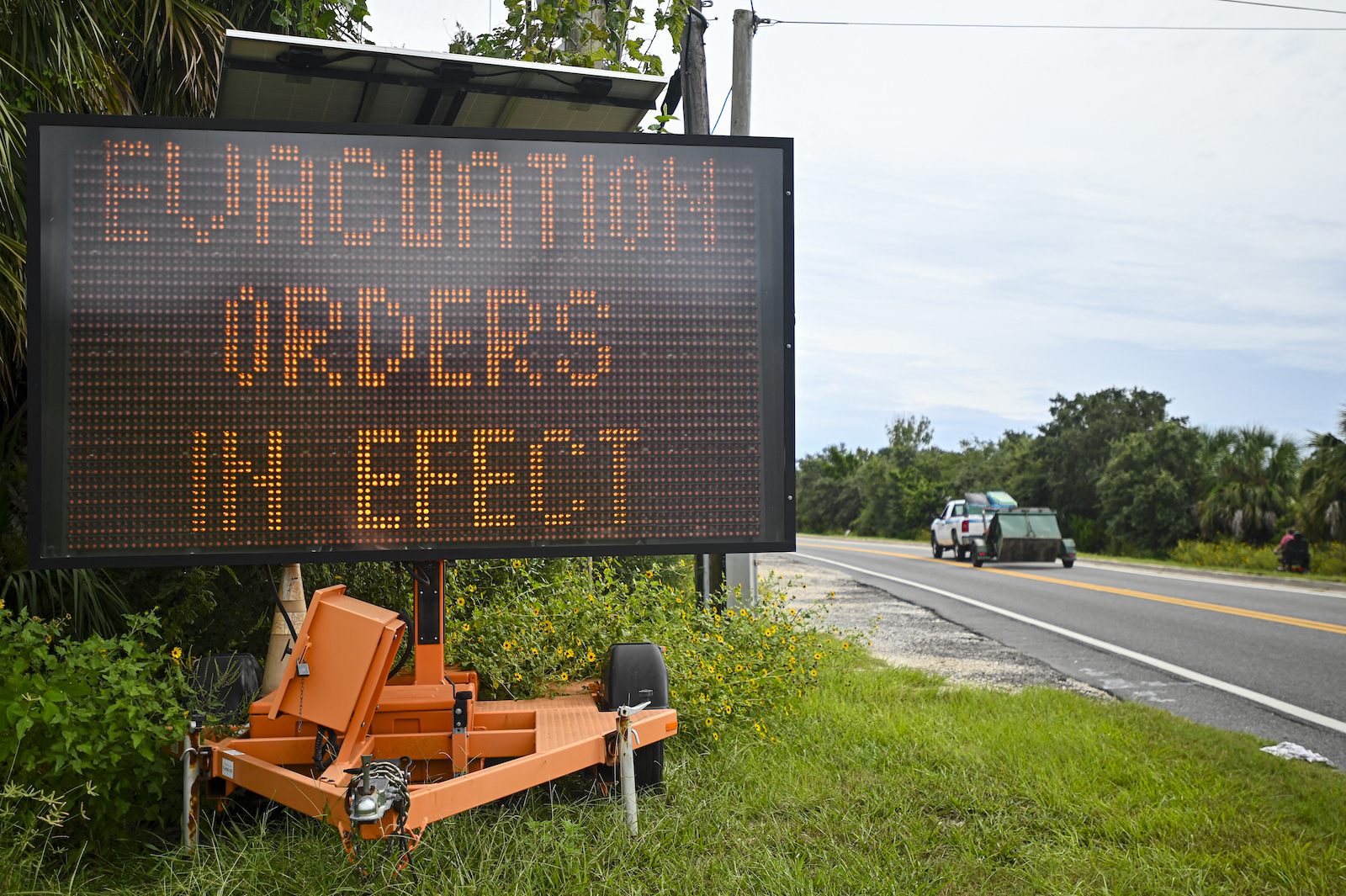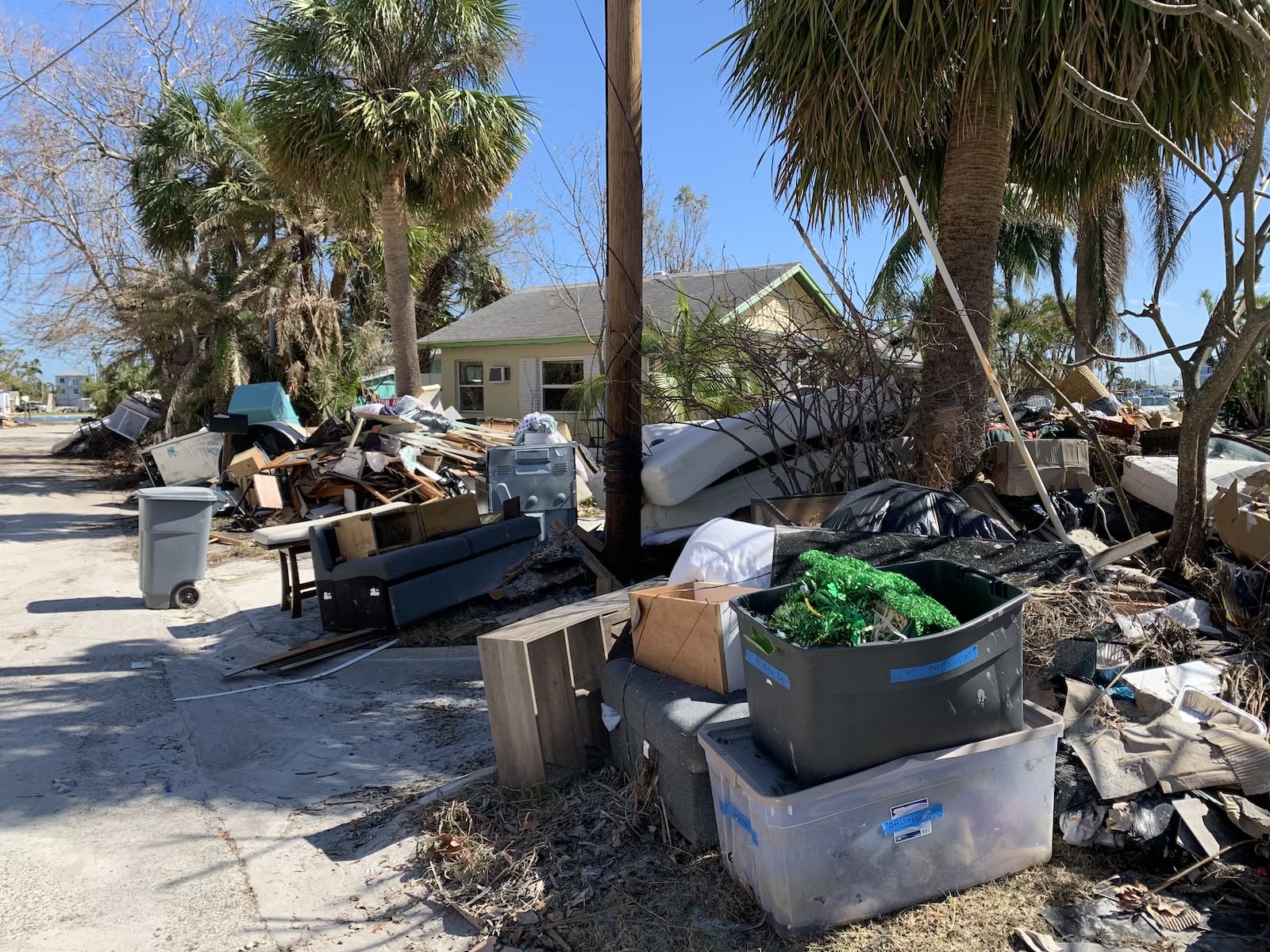Joe Vargas held his two small dogs, Peppe and Mama, around his torso, tied his beach bag and opened the front door to meet a wall of water head-on. It was the late evening of September 26, and Hurricane Helen had just begun to pound St. Petersburg, Florida with storm surge that had now engulfed it. Vargas, 63, will never forget the feeling of that moment, the murky torrent reaching up to his waist, debris churning in the deluge and crashing against his legs.
“I thought I was going to die,” he said Tuesday. The rapids flowing from the adjacent marina “looked like someone had opened a dam. “It felt like something biblical.”
Vargas lives in Harbor Lights, a manufactured home community overlooking the Intracoastal Waterway, but failed to heed mandatory evacuation orders. Not only would leaving be an additional expense and logistical headache, Vargas didn’t think he needed to. He previously survived a major hurricane. “I didn’t know about this, I’d never seen a surge like this,” he said. “I was so scared.”
People who survive hurricanes are often categorized as brave or stubborn. Sometimes they feel that the threat is exaggerated, that the need to leave is exaggerated. But some have no other choice. Evacuation can be an expensive and difficult task, often incredibly difficult. For cash-strapped families, people with limited mobility, and the elderly (not to mention those forced to work through the storm), getting away can feel like an unattainable luxury. But this decision can mean the difference between life and death.
Battling the water, Vargas eventually sought refuge in a neighbor’s abandoned home in a high-rise building down the block to wait out the storm. The next morning, he found many of the appliances damaged, but the damage to the trailer was minimal. Not everyone was so lucky. The disaster reduced several nearby homes to rubble, caused strong winds to flatten roofs, flooded vehicles and left many homes uninhabitable.

As Helene headed north, the storm was unusually large and powerful, bringing heavy rain and strong winds as far north as the Carolinas. In Asheville, North Carolina, a city considered by many to be a “climate haven,” Jamey Gunter faced another type of evacuation dilemma. Gunter, who has been in the service industry for a long time, has been serving fast food at Mars Hill University for the past three months. When Helen was attacked, she was attending a union meeting in Charlotte when she heard from her older son that a tree had fallen on the roof, the wind had blown shingles and rain had flooded the house, spreading black mold.
“I have no money.” Gunter said. “We are not paid enough.”
Her family made it through the storm unscathed, but she’s not sure where they will live in the storm. There is a shortage of hotel rooms provided by FEMA. 30 days. The path of destruction Helene has left across her community has left many roads inaccessible, preventing Gunter from returning home. She has been out of work for almost a month.
“I’m afraid there’s another storm coming,” Gunter said. “I don’t have money to move. “We have no choice but to stay.”
Two weeks later, as Helen’s recovery efforts continue across five states. More than 5.5 million Floridians As Hurricane Milton crossed the Gulf of Mexico, people were once again told to evacuate. Various city, county and state officials implored residents living in mobile homes and evacuation zones to leave. Tampa Mayor Jane Castor made it clear to residents: they will die If you ignored that command. People up and down the coast heeded the call, and one of the following results occurred. Largest evacuation effort in state history. For more than a week, the mass exodus has caused gridlock across the country. regiondepart Thousands of gas stations running out of fuel.
This time, Vargas joined the fight, leaving the Tampa Bay area and heading east to stay with his family in Lakeland. Two days before Milton landed, Kelsey Sanchez also made a hasty retreat.
Sanchez didn’t have a car, so she and her husband rented one. Beyond the storm’s expected path, the only hotel rooms we could find in North Florida cost close to $1,000 a night, so we camped out in a tent outside Pensacola until the storm passed.
Still, the ordeal was “cost prohibitive” for the couple, costing them nearly $2,500, Sanchez said. If you’re unlucky, a loose rock can shatter your car’s windshield, potentially costing you thousands of dollars in additional costs. “This has been a really strange financial downturn,” Sanchez said. “It was really stressful and it became really clear that it was something you couldn’t even plan for. “Who has $5,000?”

As Helene’s immediate impacts diminish, the public health threat increases.
This experience convinced Sanchez, a lifelong Floridian, that she and her husband should leave Florida’s burdensome hurricanes and the region for good. “It’s not sustainable,” she said. “Anxiety, financial burden, last minute problem solving. I am not wealthy enough to take the risks inherent in life. [here] Right now.”
Helene and Milton highlighted common recurring challenges resulting from disasters, including equity issues inherent in the evacuation process, said Will Curran-Groome, who studies disaster resilience and vulnerable communities at the Urban Institute. Transportation has long been considered one of the biggest barriers to evacuation facing low-income households, especially those without cars. This has led government agencies across the country to offer ride-sharing trips. emergency shelter and Recycle public transportation Ahead of the storm.
However, these systems are dependent on local emergency management plans and do not always take into account the location of vulnerable populations or other systemic barriers that can magnify transportation access issues before a disaster. In Florida, a lack of disaster communication in languages other than English has historically prevented such information from reaching those who need it.

Miguel J. Rodriguez Carrillo/AFP via Getty Images
Curran-Groome said households with limited income “face a number of intersecting challenges when they have to evacuate ahead of a storm.” Common obstacles include having a safe place to shelter, which is often easier for wealthier households who prefer hotels or other accommodations. People who cannot afford such costs must rely on transportation services and care options provided by local and state authorities. “This creates tremendous barriers and stressors,” Curran-Groome said.
researcher Survey of Hurricane Katrina Survivors We found that those who did not evacuate were often more financially unstable than those who fled. In many areas of low-lying coastal Florida, “people are underwater before it rains. And there are many people in our community who don’t have money and can’t afford to take time off from work. Andrea Mercado, executive director of the grassroots organization Florida Rising, said:

Age also tends to be a deciding factor in who stays. The elderly More likely to avoid evacuation This is due to mobility limitations, health issues and the ability to cope with stress. Owning a pet and not knowing which emergency shelters accept pets is also a common deterrent.
Mary Mitchell, a longtime nurse in Sarasota, not far from where Milton landed, stayed behind out of a sense of duty to her work. Evacuating ahead of a hurricane means, she says, “‘Okay, what is this storm going to look like? Am I on the path? Where is my zone? What should I do?’” As a nurse and hospital administrator, her “moral or ethical dilemma” is her commitment to caring for her community through the work she does.
“It’s hard because you’re flooded with thoughts like, ‘Why don’t you get out of there?’ ‘I need to get out of there,’ she said. “Give grace to people.”






